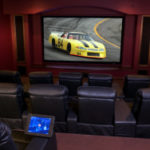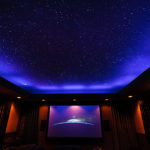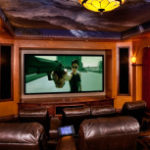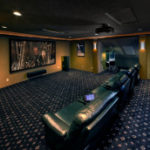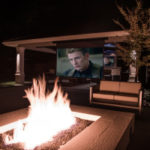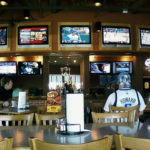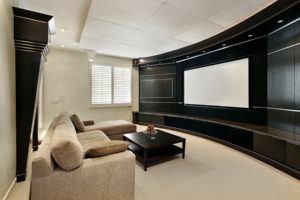 We’ve seen 3-dimensional (3D) films and videos for many years now, but the entire 3D experience hasn’t been perfected until perhaps recently, with the release of 3DTVs and 3D audio technologies.
We’ve seen 3-dimensional (3D) films and videos for many years now, but the entire 3D experience hasn’t been perfected until perhaps recently, with the release of 3DTVs and 3D audio technologies.
As 3DTVs evolve, providing deeper, more immersive perception viewing and advancing from stereoscopic display (use of 3D glasses) to autostereoscopic display (without the use of 3D glasses), so did surround sound technologies.
As of late, we have Dolby taking the reins in 3D audio innovation. While we continue to experience surround sound from left to right, front to back, we’ve actually never been totally surrounded with enough audio to have that absolute immersive, surround sound experience.
But things radically shifted when audio giant Dolby released the Atmos and used it at the premier showing of Disney Pixar’s Brave in June 2012. Fast track three to four years after, and we now have more than 2,000 commercial locations and several home theaters with Dolby Atmos.
Dolby Atmos supports 5.1 channels and above. It has 5 discrete, full bandwidth channels, which include front left and right, center, surround left and right, back left and right surround. Of course, there’s a subwoofer to handle low frequency sounds. The greatest difference with Atmos from its predecessors is the addition of 2 in-ceiling speakers that provide audio from the Z-axis, giving it the third dimension effect. While traditional audio set-ups may permit the installation of speakers above the space, suspended on ceiling and walls, they still don’t deliver the third dimension aspect of the sound with playback equipment simply because the technology only recognizes 2D sound elements.
With Atmos, you get a truly immersive 3D surround sound experience as it treats each sound as a separate object with its own descriptive data – for instance, where the sound is coming from and to what direction it is moving. The sound metadata is then processed in the decoder of the A/V receiver, which determines the best combination of speakers required to reproduce the audio.
For home theaters that aren’t suitable with in-ceiling speaker placements, Dolby suggests installing an upward-firing Atmos speaker that sits above the front left and right speaker and another upward-firing Atmos speaker above the rear left and right speaker. Note that upward-firing speakers don’t work so well in ceilings that’s shorter than 7.5 feet and taller than 14 feet.
Atmos is truly something to consider when outfitting your home theater with a 3D audio surround sound technology. While the fixed speaker location requirements in Atmos can be discouraging, rival DTS is currently perfecting its DTS:X 3D surround sound technology that’s said to be speaker-location agnostic, allowing you to arrange and position your speakers however you like.
At any rate, it looks like home theaters are about to experience massive transformation with the new surround sound format. Whatever wins this race – Dolby Atmos or DTS:X – the important thing is 3D surround sound is finally here! If you’re interested in transforming your home theater, contact VHT today!


